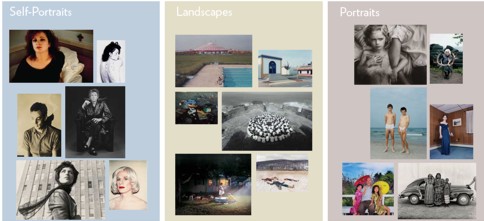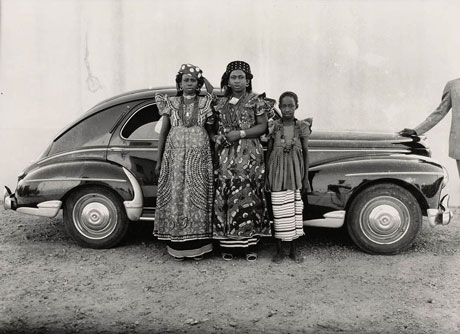The Guggenheim Museum in NY has a great little online event going which encourages interaction and collective thought around some of its collection.
Catherine Opie is an American artist specialising in issues around documentary photography.
For this exhibition, Catherine Opie has selected images from the Guggenheim Museum’s photography collection and organized them into three sections: Self-Portraits, Landscapes, and Portraits. Visitors can write responses to the questions Opie poses about them and read other people’s responses.
Here are some more details from the Guggenheim Museum website:
September 26, 2008–January 7, 2009
While celebrated for her role behind the camera, Catherine Opie remains acutely aware of the voices of her subjects, and the diverse readings all images engender. Exploring this circuit of interpretation, Opie has selected images from the Guggenheim Museum’s photography collection to present alongside questions about the works’ themes and meanings, inviting museum visitors to respond with stories of their own.
People can participate online by writing about a photograph or reading other people’s comments.
 The
The
I clicked on one of the portraits.

These are the questions asked about the portraits:
What do you think makes a portrait interesting?
- How do the titles of these photographs make you think differently about the people they portray?
- Some of these images are made spontaneously while others are carefully staged by the artist. How does this difference in approach affect your response?
Here is one of the responses:
An interesting portrait to me is one that represents people honestly. Not only is it usually aesthetically pleasing, but it also is educational and interesting. In Keita’s photo of 3 women, she presents them in their usual daily clothing, telling the viewer something about their environment and status, and then the juxtaposition of the car brings to mind a completely different world or environment. The two together represent a very real albeit somewhat staged composition that’s intriguing and interesting.
I was excited to find this, and I’d like to keep up with the many innovative programs and ideas coming out of cultural institutions such as museums. The idea of an artist selecting images from the collection is a creative way to bring out to more people what would normally remain within the walls of the museum, and perhaps not be accessed by as many otherwise. The addition of the questions and options to comment is added value, inviting interaction and the sharing of opinions. I also like the fact that, whereas people would normally just look at the photos at an exhibition, maybe read a little about them, in this case the public is invited to express their impressions and opinions.
I was a little disappointed that only one or two responses were accessible, unless I’m missing something. I was looking forward to a real discussion and debate around the photos.
Nevertheless, an inspiring concept. This would be an excellent way to initiate discussion and reflection in the art classroom.





